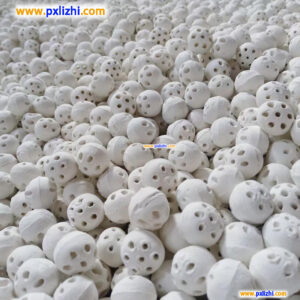Alumina Ceramic Ball: Properties and Applications

# Alumina Ceramic Ball: Properties and Applications
## Introduction to Alumina Ceramic Balls
Alumina ceramic balls are high-performance ceramic spheres made from aluminum oxide (Al₂O₃). These precision-engineered components have gained significant popularity across various industries due to their exceptional mechanical, thermal, and chemical properties. With alumina content typically ranging from 90% to 99.9%, these ceramic balls offer superior performance compared to traditional metal alternatives.
## Key Properties of Alumina Ceramic Balls
### 1. Exceptional Hardness and Wear Resistance
Alumina ceramic balls boast a Mohs hardness of 9, second only to diamond. This extreme hardness makes them highly resistant to wear and abrasion, ensuring long service life even in demanding applications.
### 2. High Temperature Stability
These ceramic balls maintain their structural integrity at temperatures up to 1,600°C (2,912°F), making them ideal for high-temperature environments where metal balls would deform or fail.
### 3. Excellent Chemical Inertness
Alumina ceramic balls demonstrate remarkable resistance to most acids, alkalis, and organic solvents, preventing corrosion and contamination in chemical processing applications.
### 4. Low Density and High Strength
With a density about half that of steel, alumina ceramic balls offer significant weight reduction while maintaining impressive mechanical strength and rigidity.
### 5. Electrical Insulation Properties
The non-conductive nature of alumina ceramic makes these balls perfect for electrical and electronic applications where insulation is critical.
## Common Applications of Alumina Ceramic Balls
### 1. Bearing Systems
Alumina ceramic balls are widely used in precision bearings for high-speed applications, particularly in industries where corrosion resistance, low friction, and high-temperature performance are essential.
### 2. Valve Components
In the oil and gas industry, alumina ceramic balls serve as critical components in valves, providing excellent wear resistance and chemical stability in harsh environments.
### 3. Grinding Media
The mining and pharmaceutical industries utilize alumina ceramic balls as grinding media in ball mills due to their high density, wear resistance, and contamination-free properties.
### 4. Pump Components
These ceramic balls are employed in pump systems where resistance to abrasive fluids and corrosive chemicals is required.
### 5. Aerospace and Defense
The aerospace sector benefits from alumina ceramic balls in various applications, including gyroscopes and other precision instruments, where their stability and reliability are crucial.
## Manufacturing Process
The production of alumina ceramic balls involves several precise steps:
– Raw material preparation and mixing
– Forming through isostatic pressing or extrusion
– High-temperature sintering (typically 1,500-1,700°C)
– Precision grinding and polishing
– Quality inspection and testing
## Advantages Over Metal Balls
Keyword: alumina ceramic ball
Compared to traditional metal balls, alumina ceramic balls offer:
– Longer service life in abrasive environments
– Reduced maintenance requirements
– Lower friction coefficients
– Better performance in corrosive conditions
– Lighter weight for the same size
– Non-magnetic properties
## Conclusion
Alumina ceramic balls represent a superior engineering solution for numerous industrial applications where performance, durability, and reliability are paramount. Their unique combination of properties makes them indispensable in sectors ranging from chemical processing to aerospace technology. As manufacturing techniques continue to advance, we can expect to see even broader adoption of these versatile ceramic components in new and innovative applications.